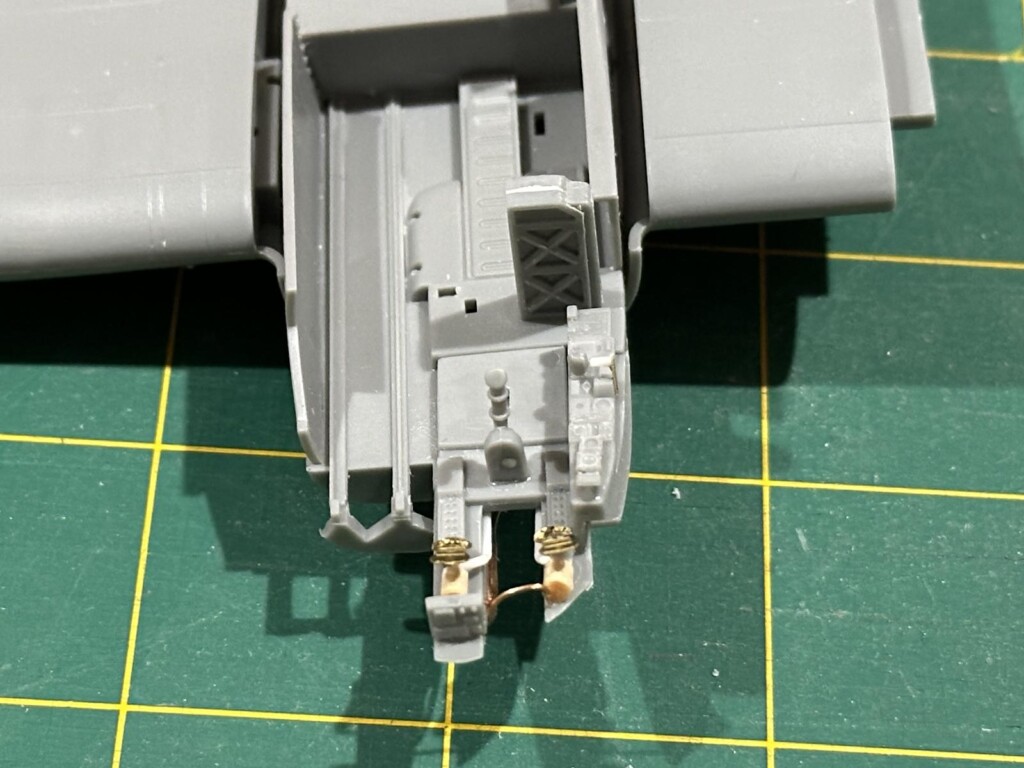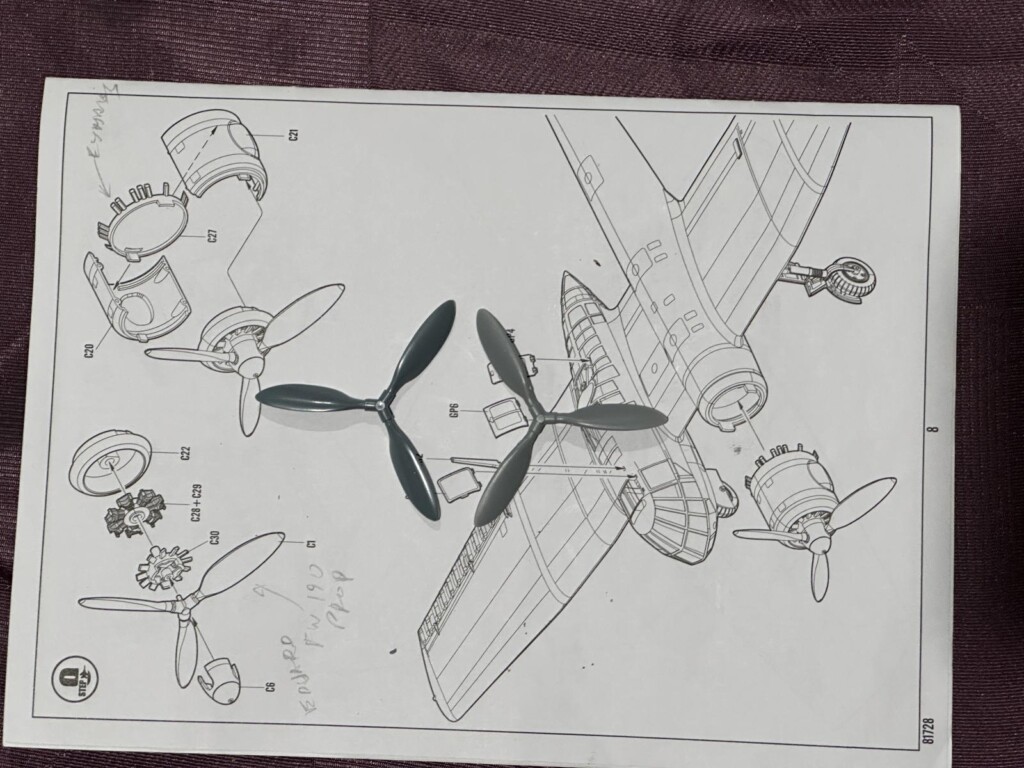I bought this from a fellow member of my modelling club and started it at our Build Camp in October.
I thought that it would be a quick build, but, as is often the case, after a bit of research I decided there were a few mods and additions that I wanted to make.
The first thing was to add seatbelts. I had a set of German bomber etched belts in the stash, so used them.
I also added some rudder pedals from another set and brake lines from copper wire. I added rudder control rods using thin, round styrene.
-

1. Brake lines and rudder control rods
I also added electrical cables for the small panel ahead of the right rudder pedal.
The kit provides decals for the various control panels and equipment, but these are single decals where the parts are 3D, so I cut out individual dials and attached them to the corresponding parts.
All of this will be visible through the extensively glazed cockpit.
-

1. Electrical cables
2. Dials cut out and added individually
The aircraft has a crew of three but only two seats. I found this picture from a German aircraft manual on the internet (translated using Google Translate).
As can be seen, the third crewmember had a seat for take-off, landing and normal flight.
I scratch built a seat using copper wire and a bit of flat styrene and added a lap belt.
You can see it in position here:
The finished cockpit:
The kit has a strange oval shaped landing light but a picture of the V10 (Bv 141B-02) I have in a book shows it to be round. As it happens, the diameter of the sprue runners is the same as the wing leading edge, so I cut out the oval landing light, glued a half section of sprue and sanded it all smooth.
Next I drilled a 3 mm hole in the leading edge, which matched the diameter of the clear sprue runners. Then I cut a section of clear sprue, and rounded one end by placing it in a electric drill and shaped it while spinning using a file.
I drilled a hole in the end to represent a globe ang painted it silver. This end I glued into the hole and, when dry, cut and sanded it smooth to create a new light.
Another photo showed that there is a superfluous control rod mid way up the vertical tail, which would, incidentally, obstruct the elevator. So, I removed this and sanded it flat.
The same photo shows that the odd rectangular piece on above the rudder trim tab should be a small rounded navigation light, so I reshaped that, too.
-

1. Extra control rod removed
2. Light re-shaped from rectangular to rounded
The elevator and ailerons have excessive corrugated surfaces, so I scraped and sanded these flat.
-

1. corrugations sanded flat
Finally (for now) early releases of this kit, and this is one such, had a propellor that rotated in the wrong direction. So, I grabbed a spare from and Eduard Fw 190A kit.
-

1. Kit prop
2. Eduard Fw 190 prop